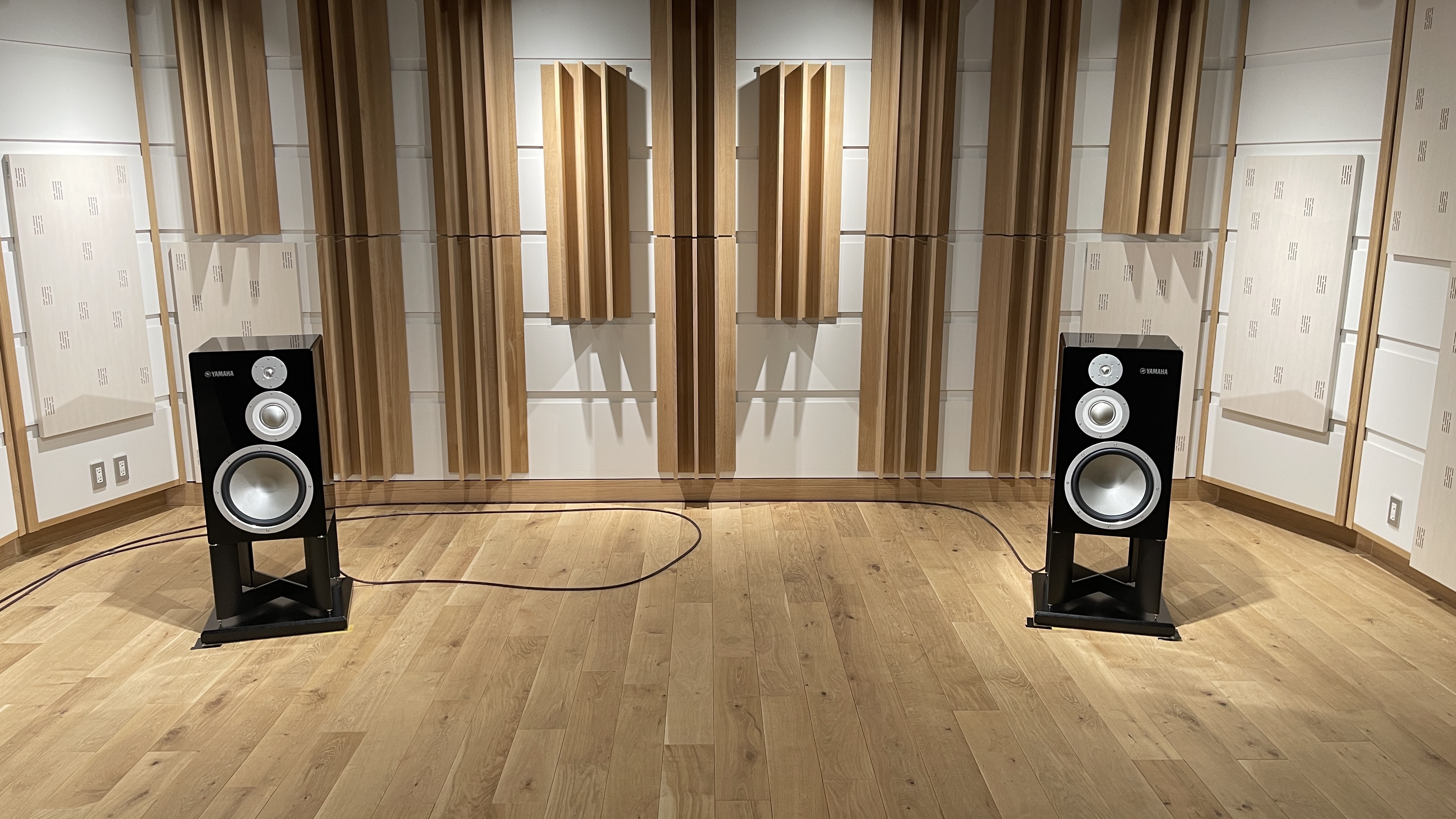What Hi-Fi? Verdict
Don’t be fooled by its playful design; the new Echo means business, delivering a weighty sound and full command of your smart home
Pros
- +
Expansive bass in a small design
- +
Lots of smart features
- +
Classy build and finish
Cons
- -
Slightly underwhelming treble
- -
Not fully omnidirectional
Why you can trust What Hi-Fi?
Amazon's popular smart speaker is back with a whole new look in its fourth generation. It also has a built-in Zigbee smart hub this time round, and more potential under its new 100 per cent recycled hood. You don’t need an especially keen eye to realise that Amazon has started from scratch for this fourth-gen Echo.
The cylinder design has gone, in favour of a Magic 8-Ball-esque sphere, and perhaps fittingly you can ask it any question you want – as long as it’s plugged into power and linked to your wi-fi. We raised an eyebrow when we first saw the new orb-like Echo, but Apple's bijou HomePod Mini (£99 / $99 / AU$149) and the emergence of two spherical Echo Dot models since have made this sort of design the norm rather than a small freak of fashion.
Amazon is transferring its once-exclusive flagship features – greater audio power and a built-in smart home hub – to the overhauled Echo. This fourth-generation Echo essentially negates the Plus model in that it offers the ability to control Zigbee devices, promises better audio over its predecessor, and, of course, offers a more nuanced Alexa voice assistance. Already, that’s a better proposition on paper than you'll get from another smart speaker in the sub-£100 ($100, AU$200) price, er... sphere.
Build
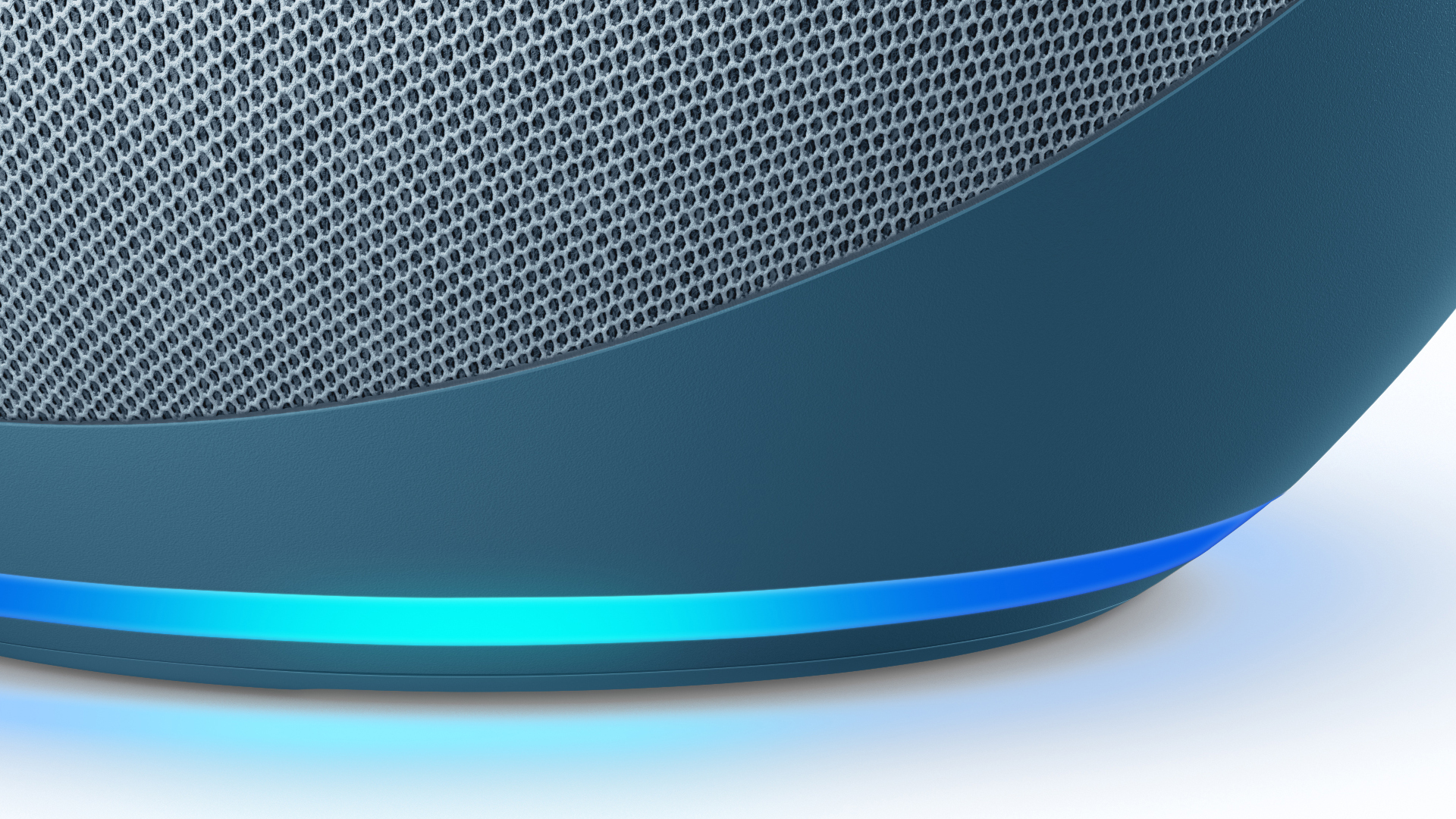
The Echo measures 13cm tall, 14cm wide and is near-spherical (the base has been lopped off to provide a flat surface to prevent the unit from rolling), making it roughly the height and width of a CD. It’s available in black, dusky blue or white.
Amazon’s trademark smart speaker light ring has been relocated from the crown of the speaker to the base, providing a glow that now reflects nicely off surfaces. It lights up blue when you utter your chosen Alexa wake-word, yellow when grouped with another Amazon speaker, and orange in set-up mode.
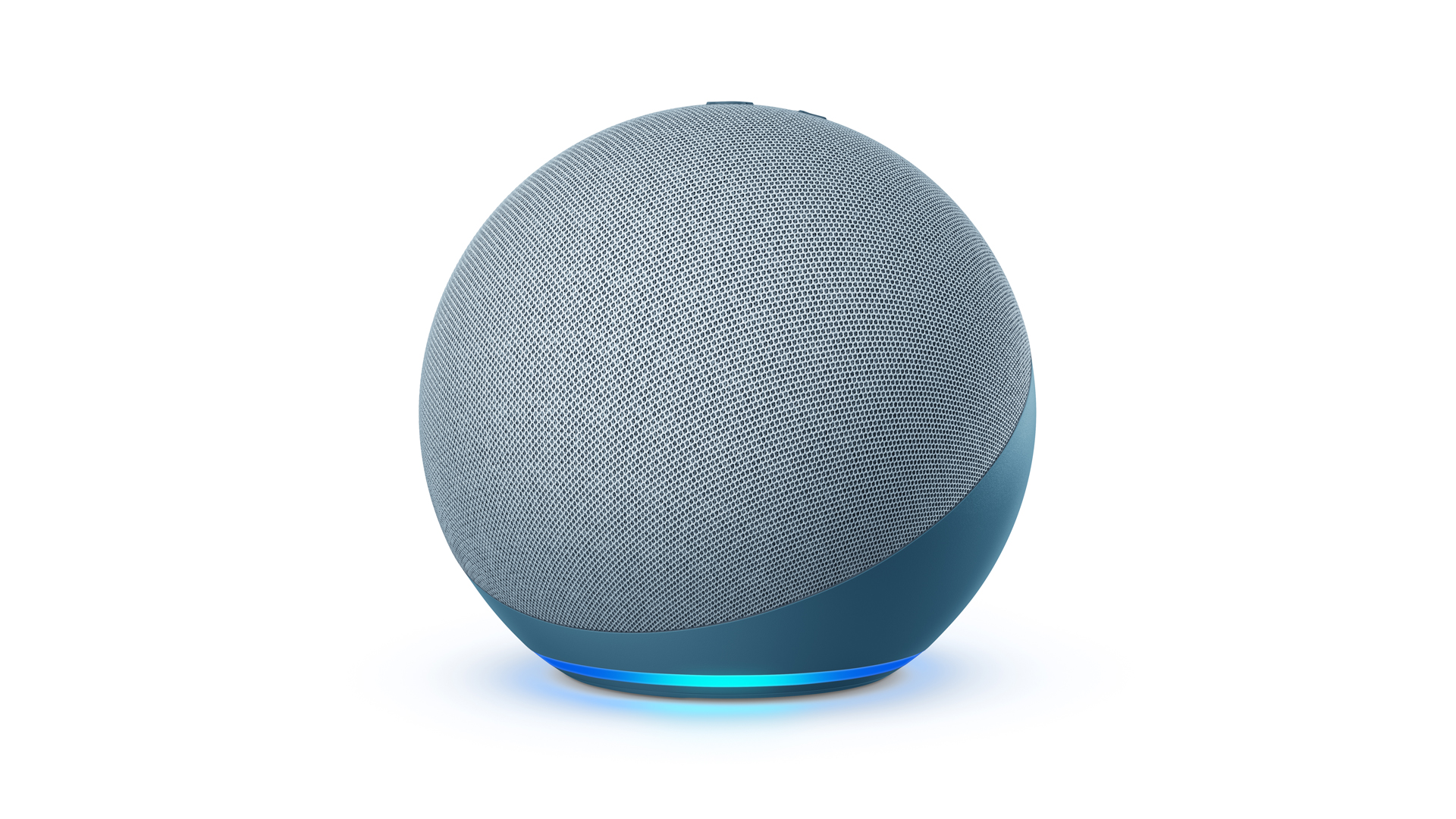
Finishes x3
Voice assistant Amazon Alexa
Audio 7.6cm woofer, 2x 2cm tweeters
Dimensions (hwd) 14 x 14 x 13cm
Weight 970g
On the top panel are buttons for Alexa, volume and mic mute. Around the back is where you’ll find the power socket and 3.5mm audio output. Perhaps one small mark against the new design is a rising die-cast aluminium ellipse that is at its highest above the connection ports, meaning that the back portion of the speaker doesn’t provide great omnidirectional sound output.
It’s a small issue – since Echo speakers need to be plugged in to operate, you’re unlikely to put one in the centre of a room, but we found better multi-directional sound in the older, cylindrical model.
Underneath its notably more mesh-like fabric jacket, the Echo houses a 76mm woofer plus dual 20mm front-firing tweeters, a set-up that supports Dolby Stereo (not to be confused with Dolby Atmos. It now features what Amazon calls ‘premium adaptive sound’, allowing it to sense the acoustics of your space and fine-tune audio playback accordingly.
The drivers in the new Echo come in the form of a 7.6cm woofer combined with two 2cm tweeters. Alongside its built-in Zigbee smart home hub, there’s support for Bluetooth Low Energy (BLE) and Amazon Sidewalk. The purpose of the latter is to help you set up new devices quickly and extend the working range of things, such as Ring Smart Lighting, that may be beyond the capabilities of your home wi-fi.
The new Echo’s design is nothing if not a conversation piece. It's ended up becoming something of a trailblazer, with the HomePod Mini, Echo Dot (4th Gen) and Echo Dot (5th Gen) all taking up the spherical mantle.
Features
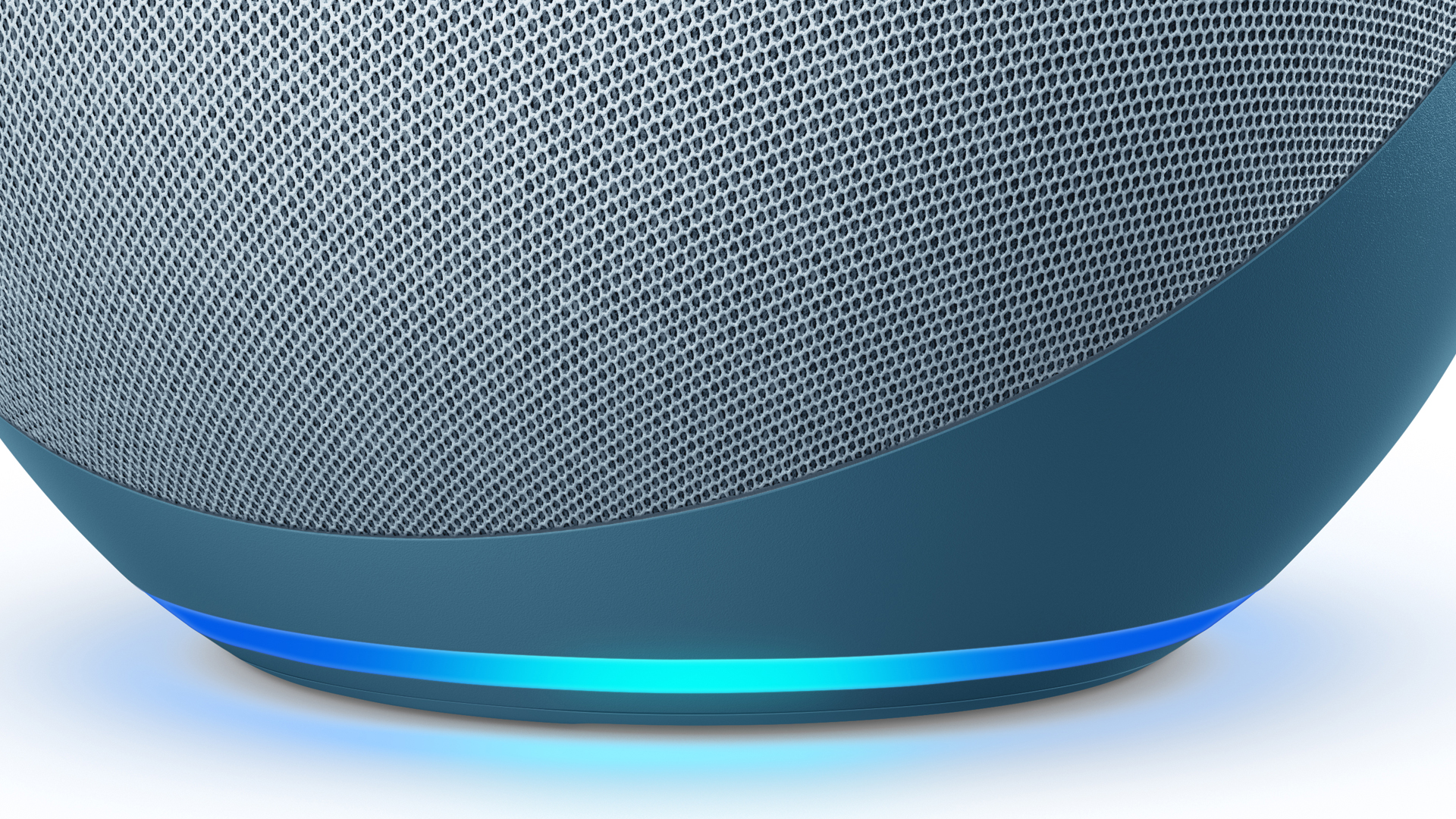
The Echo includes Amazon’s AZ1 Neural Edge processor, a silicon module purpose-built for accelerating machine learning applications. With AZ1, powerful inference engines can run ‘on the edge’ (ie. on the device), starting with an all-neural speech recognition model that should process requests faster and make Alexa even more responsive, ‘learning’ and understanding more about you over time.
As long as that concept doesn’t scare you off completely (you can turn the Echo’s mics off whenever you want), your preference between Google Assistant or Amazon Alexa will likely come down to compatibility with other products in your home. For us, there’s not much in it – and the service here is greatly improved thanks to an impressive range of third-party services, including BBC, The Guardian and Pointless smarts in the UK.
It’s easy to get the Echo up and running using your smartphone (you must enable Bluetooth) and wi-fi, and once you’ve linked your streaming service accounts, it'll play music from Amazon Music Unlimited (of course), Apple Music, Spotify or Deezer over wi-fi. Even if you don’t link any music-provider subscriptions, the Echo will play from Amazon Music Free by default – and you’ve always got TuneIn radio too.

Set-up is done using the Amazon Alexa app, which is well-designed and intuitive. On the app, you can alter your Echo’s EQ levels, give it a name and assign it to a room in your house, or group it with other compatible Alexa speakers. For example, create a “downstairs” group, say “Alexa, play music downstairs”, and your new multi-room Alexa smart set-up obeys.
You can make Alexa announce that ‘Dinner’s ready’ to every speaker in your home thanks to its intercom feature, or send music to a particular room as a not-so-subtle message – Bruno Mars’ Lazy Song to a room containing a housemate who’s yet to emerge, perhaps. The ‘Devices’ tab followed by the ‘Plus’ icon sets up most of these scenarios, and, while we found Alexa most attentive during testing, if you prefer to click rather than vocalise your tune requests, simply tap the in-app ‘play’ icon and use your phone to load up music.
We partner two spherical Echos together in a group, allowing us to switch from one to the other easily. While stereo pairing is an Echo feature, it can only be done with two equivalent speakers.
Sound
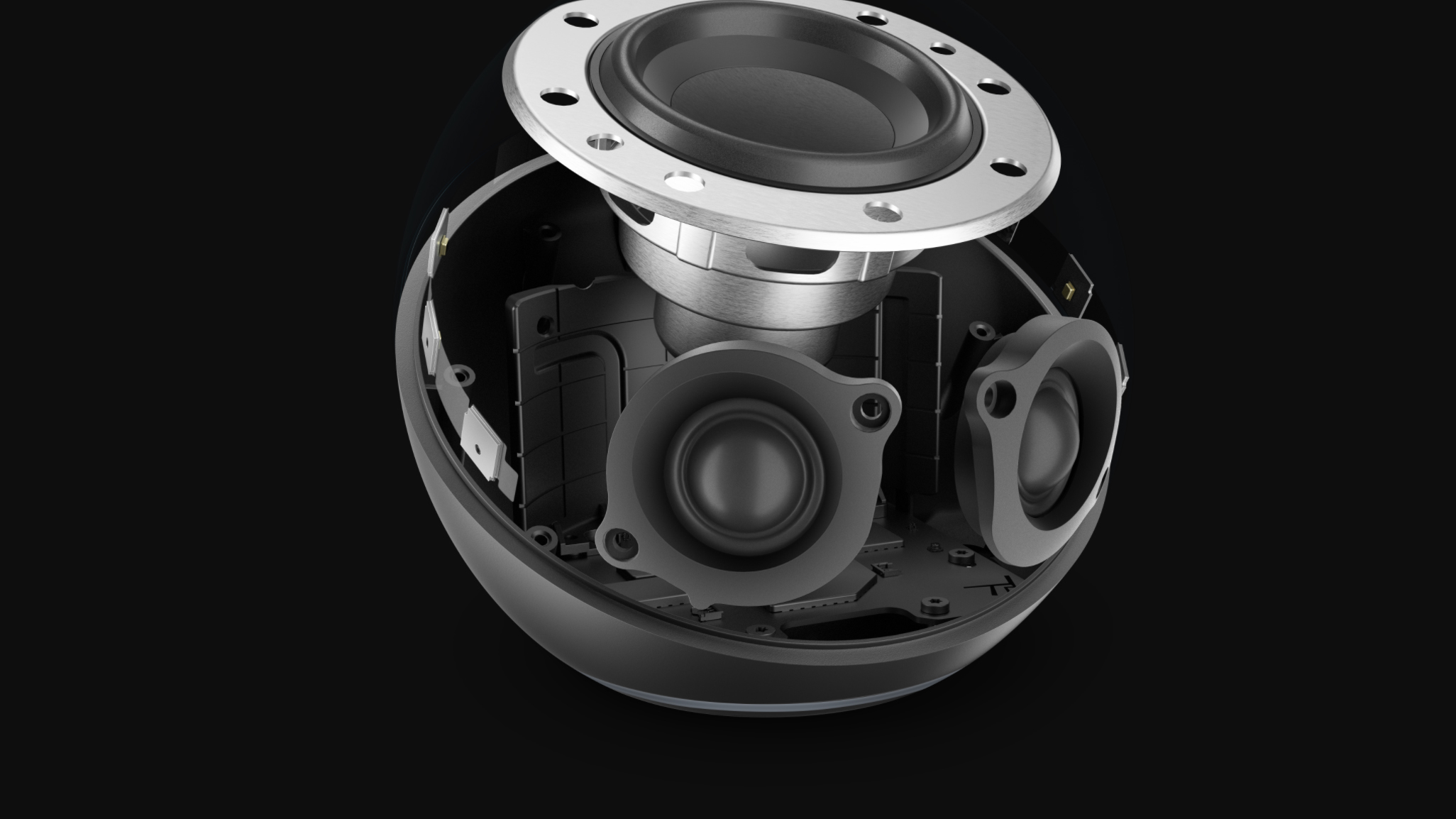
We ask Alexa to play an '80s Spotify playlist and during Livin’ On A Prayer, Jon Bon Jovi’s vocal is central alongside a surprisingly expansive bass: there’s the deep injection of Richie Sambora’s electric guitar, backing vocals and trademark voice box. These musical strands are much clearer and impactful through the newer Echo.
Our playlist continues to Queen’s Don’t Stop Me Now, and we’re treated to a well-timed performance across the frequencies. It isn’t afraid to go low either – one of our gripes with the older Echos was an occasionally soft and ill-defined bass, and it feels as though Amazon has addressed this.
We switch to Outnumbered by Dermot Kennedy on Apple Music, and the textured vocal comes through centrally, with an impactful but agile bassline. Stream hip-hop and the new Echo comes into its own, brimming with full-bodied, textured lows.
With Disturbed’s cover of The Sound Of Silence, the new Echo presents a sound that’s weighty and expansive enough through the bass for its size, but it lacks bite and we find ourselves upping the volume to get it.
Carmina Burana, performed by Edvin Marton, again features a more pronounced string section through the older Echo. While there is a more expansive mix across the frequencies in the new speaker, this piece hones in on the violin, and here there is urgency and excitement through the frantically bowed passages. Because of this, the track hangs together with a better sense of unity alongside its pumping dance beat.
Of course, the upside of the slightly recessed treble in the spherical speaker is that it handles tracks with greater refinement, while the older model can expose brightness or harshness in some recordings. Ultimately, your preference will come down to whether you favour a fun, energetic sound or a more integrated hi-fi approach. We lean towards the latter, but it won’t be for everyone – and it is a mark against the new Echo that the treble is a little undercooked.
Verdict

Putting the new Echo’s minor sonic shortfalls as a hi-fi proposition to one side, its usability and likeability cannot be ignored. Alexa feels present and useful but not imposing, the Alexa app support makes placement and multi-room configurations a breeze, and the sound quality, while a step down from ideal, easily passes the sound-per-pound value test for a smart speaker of this modest price.
It’s important to remember that as a smart home hub, the Echo’s sonic chops are a side feature rather than its raison d’etre. The Amazon Echo (4th Generation) is ultimately a solid cornerstone from which to build your smart home and easily betters its predecessor for expansiveness, subtlety and bass weight.
SCORES
- Sound 4
- Features 4
- Build 5
MORE:
Read our guide to the best smart speakers
Read our Amazon Echo Show 5 review
Read our Apple HomePod Mini review
What Hi-Fi?, founded in 1976, is the world's leading independent guide to buying and owning hi-fi and home entertainment products. Our comprehensive tests help you buy the very best for your money, with our advice sections giving you step-by-step information on how to get even more from your music and movies. Everything is tested by our dedicated team of in-house reviewers in our custom-built test rooms in London, Reading and Bath. Our coveted five-star rating and Awards are recognised all over the world as the ultimate seal of approval, so you can buy with absolute confidence.
-
jjbomber Was £55 last September and will be around that price again on Prime Day.. Bargain at that price, and hopefully again in a couple of weeks time.Reply

